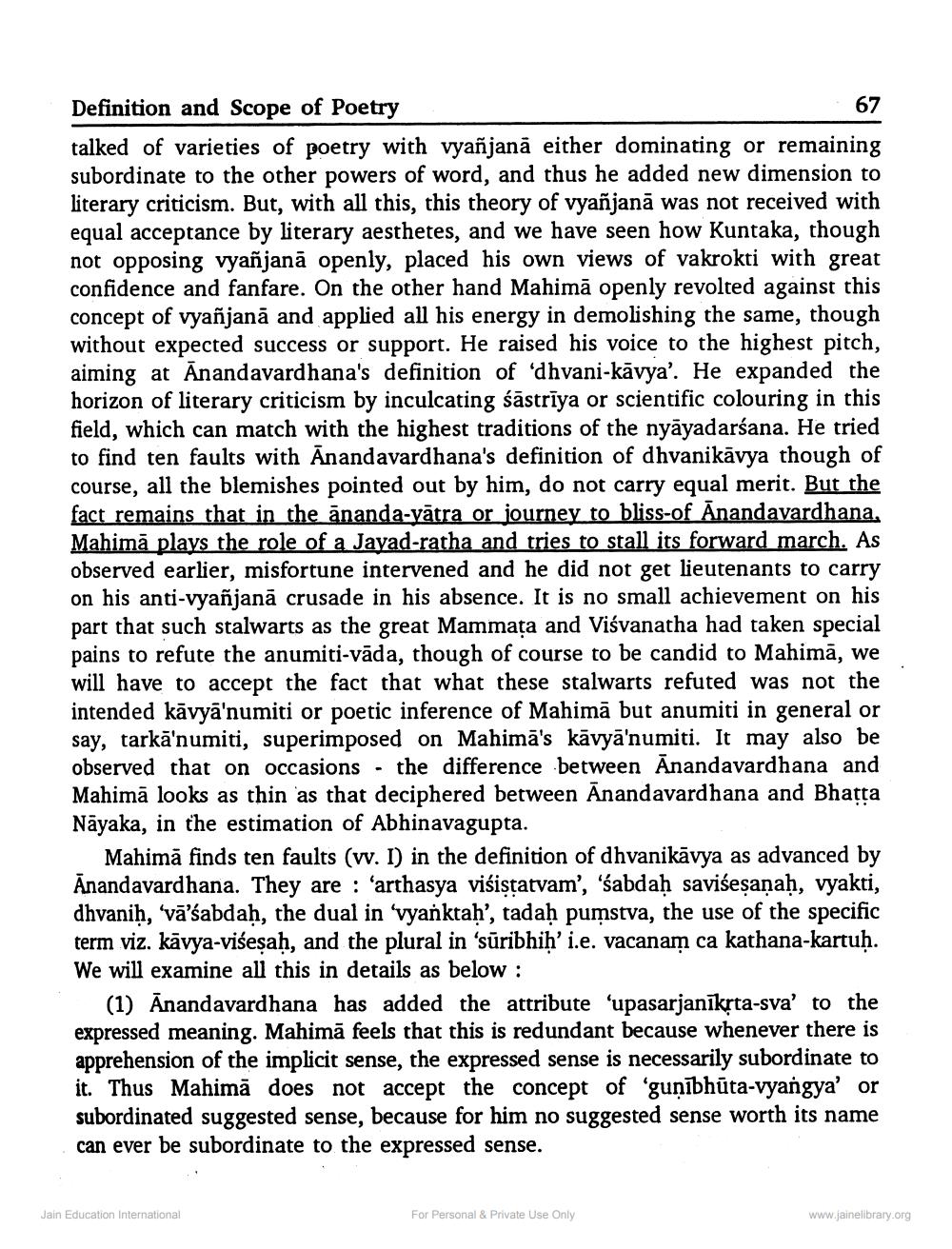________________
Definition and Scope of Poetry
67 talked of varieties of poetry with vyañjana either dominating or remaining subordinate to the other powers of word, and thus he added new dimension to literary criticism. But, with all this, this theory of vyañjanā was not received with equal acceptance by literary aesthetes, and we have seen how Kuntaka, though not opposing vyañjanā openly, placed his own views of vakrokti with great confidence and fanfare. On the other hand Mahimā openly revolted against this concept of vyañjanā and applied all his energy in demolishing the same, though without expected success or support. He raised his voice to the highest pitch, aiming at Anandavardhana's definition of dhvani-kāvya'. He expanded the horizon of literary criticism by inculcating śāstrīya or scientific colouring in this field, which can match with the highest traditions of the nyāyadarśana. He tried to find ten faults with Anandavardhana's definition of dhvanikāvya though of course, all the blemishes pointed out by him, do not carry equal merit. But the fact remains that in the ananda-vātra or journey to bliss-of Ānandavardhana, Mahimā plays the role of a Jayad-ratha and tries to stall its forward march. As observed earlier, misfortune intervened and he did not get lieutenants to carry on his anti-vyañjanā crusade in his absence. It is no small achievement on his part that such stalwarts as the great Mammata and Visvanatha had taken special pains to refute the anumiti-vāda, though of course to be candid to Mahimā, we will have to accept the fact that what these stalwarts refuted was not the intended kāvā'numiti or poetic inference of Mahimā but anumiti in general or say, tarkā'numiti, superimposed on Mahima's kavya'numiti. It may also be observed that on occasions - the difference between Anandavardhana and Mahimā looks as thin as that deciphered between Anandavardhana and Bhatta Nayaka, in the estimation of Abhinavagupta.
Mahimā finds ten faults (w. I) in the definition of dhvanikavya as advanced by Anandavardhana. They are : 'arthasya viśistatvam', 'śabdaḥ saviśesanah, vyakti, dhvanih, 'vā'sabdah, the dual in 'vyanktah', tadah pumstva, the use of the specific term viz. kāvya-višeṣaḥ, and the plural in 'sūribhiḥ' i.e. vacanam ca kathana-kartuḥ. We will examine all this in details as below :
(1) Ānandavardhana has added the attribute 'upasarjanīkrta-sva’ to the expressed meaning. Mahimā feels that this is redundant because whenever there is apprehension of the implicit sense, the expressed sense is necessarily subordinate to
Thus Mahimā does not accept the concept of 'gunībhūta-vyangya' or subordinated suggested sense, because for him no suggested sense worth its name can ever be subordinate to the expressed sense.
Jain Education International
For Personal & Private Use Only
www.jainelibrary.org




